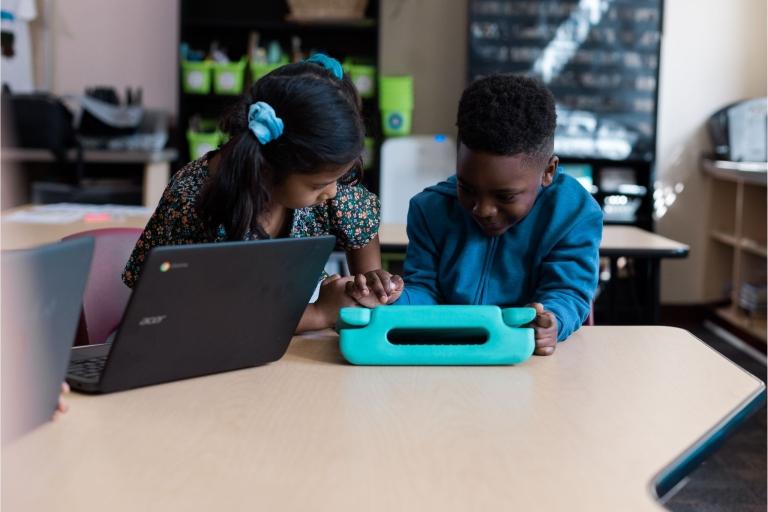The right Edtech tools will only get you so far. Districts must build effective communication and robust adoption strategies to drive meaningful change and maximize the impact on teaching and learning. Here’s a strategic approach to ensuring the success of your Edtech.
Effective Change Management in Education Technology
Managing change in education requires careful planning and a focus on the people who will use the technology. A well-executed plan makes every stakeholder feel informed, supported, and empowered before, during, and after the transition.
Communication Approach
Strong communication is the foundation of effective change management. To keep everyone on the same page, consider these key communication strategies:
- Start early: The earlier stakeholders are informed of the coming change, the more time they have to ask questions and prepare themselves.
- Identify diverse audiences: Recognize that different groups (teachers, students, parents, administrators) have unique needs and perspectives.
- Craft targeted messaging: Tailor messages to each audience, emphasizing how the technology will address their specific challenges or goals.
- Use multiple media channels: Reach your audiences effectively through email, newsletters, videos, webinars, and in-person meetings, depending on where they show up.
- Repeat key messages: Reinforce critical information so it resonates and remains top of mind.
- Solicit feedback: Encourage two-way communication by gathering input from stakeholders, addressing concerns, and making adjustments as needed.
Professional Learning Strategy
Educators regularly encounter new technology, whether through widespread or personal adoption. Comprehensive professional development builds confidence and competence. A well-designed learning strategy should include:
- Asynchronous and synchronous options: Offer flexibility with on-demand resources and live training sessions to accommodate diverse schedules and learning preferences. Just as we differentiate for students, we should consider how to do the same for adults learning a new tool.
- Short, targeted instructional videos: Provide bite-sized, easily digestible tutorials that focus on specific tasks or features.
- Tiered learning paths: Design training programs that cater to different experience levels, from beginners to advanced users.
- Regular reinforcement: Schedule follow-up sessions, refresher courses, and updates to keep skills sharp and address evolving needs. As new features are added to the tools and teachers uncover new ways to use them, avoid a once-and-done approach.
- Teacher ambassadors: Empower tech-savvy educators to serve as champions and mentors, providing peer-to-peer support and inspiration.
Adoption Best Practices
Beyond training, fostering widespread adoption requires intentional strategies to integrate technology into daily routines and workflows.
- Centralize professional development resources: Create a one-stop hub for all training materials, guides, and troubleshooting tips.
- Create multiple learning entry points: Provide various ways for users to engage with the technology, like structured workshops, on-demand webinar trainings, or self-guided exploration.
- Build ongoing support mechanisms: Establish help desks, peer support groups, and dedicated Edtech coaches to offer continuous assistance.
- Monitor tool engagement: Use analytics to track usage and identify areas where additional support or intervention may be needed.
Pro Tip: Invest in Professional Development Before Replacing Tools
Switching to new technology without adequately training users can lead to frustration and resistance. Prioritize professional development to create a smooth transition, build confidence and trust in your educators, and maximize the return on your Edtech investment.
Key Takeaway
Countless Edtech tools now exist that effectively support teachers and learners across K-12 settings. But getting the most out of them in your district and school demands thoughtful communication, effective training, and strategies to drive adoption. By focusing on the people behind the technology, districts can create a culture of innovation and see lasting success.
Want deeper insights into EdTech implementation? Download Full Guide



